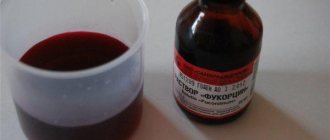Causes of candidal stomatitis
The most common cause of candidiasis stomatitis is a fungus of the Candida albicans group. It is worth noting that these fungi are always present on the mucous membranes of the mouth, and do not cause any harm to the body until they begin to multiply.
The causes of the development of candidal stomatitis are the following factors and diseases:
- Weak immunity;
- People with Sjögren's syndrome;
- Neglect of general rules of oral hygiene;
- Constant stress;
- Various diseases of the oral cavity;
- Taking antibiotics or corticosteroids;
- Having a disease such as diabetes. This is all due to the fact that the blood contains a large amount of sugar, and this serves as an excellent environment for the development of fungus of the genus Candida.
It is also worth noting that adults who suffer from excessive dry mouth can get candidal stomatitis. The most common cause of such dryness is the abuse of dental elixirs.
Another factor that can cause the development of candidal stomatitis is pregnancy. After all, it’s no secret that it is during this period that significant hormonal changes occur in a woman’s body, which, in turn, greatly affect the bacterial balance in the mouth.
special instructions
Treatment with fluconazole may be initiated pending the results of cultures and other laboratory tests, but therapy should be adjusted accordingly once the results of these tests are available.
During treatment, it is necessary to monitor blood counts, kidney and liver function. If renal and liver dysfunction occurs, you should stop taking the drug.
Treatment must be continued until clinical and hematological remission occurs (an exception is acute vaginal candidiasis). Premature cessation of treatment leads to relapses.
People with AIDS are more likely to develop severe skin reactions when taking many drugs. In cases where a rash develops in patients with a superficial fungal infection and is assessed as definitely related to fluconazole, the drug should be discontinued. If a rash occurs in patients with invasive/systemic fungal infections, they should be closely monitored and fluconazole should be discontinued if bullous changes or erythema multiforme occur.
In rare cases, the use of fluconazole has been accompanied by toxic changes in the liver, including death, mainly in patients with serious concomitant diseases. In the case of hepatotoxic effects associated with fluconazole, there was no obvious dependence on the total daily dose, duration of therapy, gender and age of the patient. The hepatotoxic effects of fluconazole were usually reversible; its signs disappeared after cessation of therapy. If clinical signs of liver damage that may be associated with fluconazole appear, the drug should be discontinued.
Symptoms
A number of symptoms are characteristic of candidal stomatitis:
- The appearance of a white or yellowish coating on the tongue, cheeks or palate. When trying to eliminate it, bleeding wounds may appear on the mucous membrane.
- Constant metallic taste.
- Feeling of heartburn on the tongue.
- Painful sensations from touching plaque.
- Later, as plaque spreads, difficulty swallowing occurs.
- Deterioration of tongue sensitivity and poor taste perception.
Forms of the disease
Candidal stomatitis is a fairly common disease that manifests itself in various forms. The symptoms can determine how much it is progressing. Treatment depends on the severity of the disease.
In the earliest stages, a mild form of the disease appears. It is characterized by the formation of single small white spots on the tongue or cheeks.
In the next middle stage, ulcers may form, and white spots themselves cover most of the tongue and mouth.
And at the most severe stages, plaque cannot be removed - it completely covers the entire oral cavity and forms a white film. Also, candidal stomatitis is classified separately depending on the location:
- Candidal stomatitis of the corners of the mouth. Very small cracks appear at the corners of the mouth, which cause pain. This is especially evident when opening the mouth.
- Yeast glossitis usually occurs on the surface of the tongue. It is characterized by a white coating and even swelling of the tongue.
- Thrush - the so-called yeast stomatitis - is a disease in which plaque forms on the cheeks and gums. The mucous membrane itself becomes reddened.
Fluconazole in the treatment of candidiasis
IN
In recent years, the prevalence of fungal diseases has increased significantly, which is associated with the widespread and not always rational use of antibiotics, cytostatics, corticosteroid hormones, an increase in the frequency of nosocomial infections, and the development of immunodeficiency states.
The most common candidiasis in clinical practice is caused by the yeast-like fungus Candida albicans.
. The development of candidiasis is promoted by both local and systemic factors. For example, with skin candidiasis, the presence of maceration, diaper rash, and paronychia is of great importance. Most often, candidiasis occurs in patients with diabetes mellitus, HIV infection, hematological malignancies, as well as with long-term and uncontrolled use of antibiotics and corticosteroid hormones.
Clinical manifestations
candidiasis is characterized by damage to the mucous membranes of the oral cavity (stomatitis), esophagus (esophagitis), urogenital tract, skin and nails. The most severe manifestations are caused by hematogenous dissemination (endocarditis, meningitis, arthritis, osteomyelitis, brain abscess).
Skin lesions with candidiasis are characterized by the appearance of vesicles and pustules, which quickly open and erosion forms in their place. The lesions are dark red in color, shiny, with a moist surface, clear boundaries and a strip of exfoliating stratum corneum of the epidermis. In children, the process can spread to the skin of the thighs, buttocks, and abdomen. The appearance of interdigital candidiasis erosion is often observed, most often between the III and IV IV and V fingers of the hands, less often of the feet. Subjective sensations include itching, burning, and sometimes pain in the affected area.
Candidiasis of the oral mucosa is characterized by damage to the mucous membranes of the cheeks, tongue, gums, and corners of the mouth. The process begins with redness of the mucous membrane, then white deposits appear, merging to form large films. At first, the films separate easily, then become dense. Cracks with pronounced maceration form in the corners of the mouth, and there is a burning sensation and pain when eating.
Candidiasis of the nail folds and nails begins with redness and swelling of the fold at the base of the nail, which swells and when pressed, pus or ichor is released. When a fungal infection penetrates the nail plate, it becomes yellowish and dull.
Urogenital candidiasis can occur in acute or chronic form. The acute form is characterized by redness of the mucous membrane, the presence of blisters, pinpoint erosions and the presence of cheesy or flaky, creamy discharge. The affected mucosa tends to bleed and develop cracks in the area of the vaginal vestibule and perineum. Itching is characteristic of candidiasis of the vulva, labia majora and minora, and intensifies during menstruation, sexual intercourse and prolonged walking. Chronic urogenital candidiasis is characterized by infiltration and cracks in the area of the clitoris, anus, perineum and inguinal folds. Candidiasis of the urinary organs occurs in the form of urethritis, cystitis, and pyelonephritis. Candidal cystitis is characterized by frequent urination and pain in the suprapubic region. With urethritis, mucopurulent discharge of white or yellow color appears, mainly in the morning. Itching and burning intensify when urinating.
Candidal balanoposthitis is manifested by redness, swelling of the glans penis, itching and burning when urinating. Yellowish films and a loose cheesy mass form on the contacting surfaces of the head and foreskin.
With candidiasis of the digestive tract, damage to the esophagus, stomach, intestines and gallbladder develops, which is associated with the spread of infection from the mouth and pharynx. Patients complain of nausea, belching, vomiting, loose stools mixed with mucus, and abdominal pain. The mucous membrane is hyperemic, eroded, covered with multiple white or yellow deposits.
Candidiasis of the central nervous system occurs as meningitis and develops as a result of hematogenous dissemination of the infection. There are no specific clinical manifestations; fungal infection is often confirmed only at autopsy.
Hematogenous dissemination of fungal infection C. albicans
accompanied by fever, toxic and focal manifestations (retinal abscess, endocardial candidiasis, arthritis, meningitis, pneumonia).
Candidal sepsis develops when the mucous membrane of the oral cavity and esophagus is damaged in young children and in patients with diabetes mellitus and HIV infection. The clinical picture is dominated by symptoms of intoxication, sudden rises and falls in temperature, and a decrease in blood pressure.
Diagnosis of candidiasis
based on clinical manifestations (itching, burning, plaque, swelling of the mucous membranes, hyperemia and others), microbiological tests (
in vitro
, histology and detection of specific antigens in the immunofluorescence reaction with monoclonal antibodies against
C. albicans
, detection of specific antibodies by enzyme immunoassay).
For the treatment of candidiasis
use antimycotic drugs of systemic action (polyene antimycotics, triazole derivatives, pyrimidine derivatives and allylamines).
Among triazole derivatives, the leading place is occupied by fluconazole (Mikosist)
, which is a selective inhibitor of sterol synthesis in the fungal cell.
Fluconazole is highly active against C. albicans
: Only about 3-5% of
C. albicans
are resistant to fluconazole or have intermediate sensitivity.
Candida krusei
and certain strains
of Candida glabrata
are resistant to fluconazole.
After oral administration of fluconazole, more than 90% of the drug enters the systemic circulation. It penetrates perfectly into saliva, sputum, urine and other tissue fluids. Fluconazole is excreted primarily in the urine unchanged. The half-life with normal renal function is 27-34 hours. Mikosist (fluconazole) is available in two forms - for intravenous and oral administration, the oral form has very good bioavailability.
Fluconazole is the drug of choice for candidiasis of the urinary tract, esophagitis, peritonitis, wound infection, and is used in the treatment of febrile neutropenia. For urogenital candidiasis, fluconazole is prescribed in a dose of 50 to 200 mg per day for 7-28 days. For candidal esophagitis, a dose of 400 mg is recommended, followed by a reduction to 200 mg.
Fluconazole is considered the drug of choice in the systemic treatment of oral candidiasis. For oropharyngeal candidiasis, fluconazole is prescribed to adults at a dose of 100 mg once a day for 7-14 days. For atrophic candidiasis of the oral cavity, it is preferable to prescribe fluconazole at a dose of 50 mg per day for 14 days. When C. albicans
the dose of fluconazole is increased to 400–800 mg/day. With frequent relapses, it is possible to prescribe pulse therapy with fluconazole (150 mg once a week). Intermittent circuits help prevent the development of resistance.
For cutaneous candidiasis, the effective dose of fluconazole ranges from 50 to 100 mg per day for 14-28 days. For candidiasis of the skin of the feet, we recommend a dose of 150 mg per day for 14-28 days.
The choice of treatment for candida paronychia depends on the stage of the process, the severity of inflammation, the presence of candidiasis of the skin or mucous membranes, and onychomycosis. Fluconazole is prescribed for concomitant onychomycosis, a combination of paronychia with candidiasis of the skin or mucous membranes. In these cases, local therapy alone does not guarantee cure and elimination of the pathogen. Fluconazole is prescribed 150 mg once a week for 2–6 weeks. Systemic therapy can be combined with treatment with local antiseptics or antifungals.
To prevent candidiasis during antibiotic therapy, the dose of fluconazole is from 50 to 300 mg per day once, depending on the risk of developing a fungal infection.
In children, the daily dose is 3 mg/kg body weight per day. On the first day, it is advisable to prescribe a loading dose of 6 mg/kg per day. The duration of therapy in children ranges from 1 to 14 days, depending on the severity of the candidiasis infection.
Fluconazole is well tolerated, adverse reactions occur mainly from the gastrointestinal tract (abdominal pain, nausea, flatulence), headache and skin rashes are less common.
Treatment
First of all, when treating candidal stomatitis, you need to determine and eliminate the cause, adhere to the principles of proper nutrition and strengthen the body's immune system. And, of course, it is necessary to monitor oral hygiene. In most cases, this is quite enough for recovery.
If the disease is in a moderate or severe stage, the doctor often prescribes special medications for oral administration and antifungal ointments. Taking medications continues until the symptoms in the oral cavity are completely eliminated, in order to exclude possible relapses.
Treatment of mild forms of candidal stomatitis is carried out at home and does not require special conditions. Antifungal elixirs and lozenges are used. On average, the treatment course takes no more than two weeks.
More severe forms are characterized by the fact that the infection enters the digestive tract. Antifungal drugs are used to combat the disease. The course of treatment lasts from 2 to 4 weeks.
Recurrent forms of candidal stomatitis require much more time and money. Treatment is carried out until all symptoms disappear completely. Various antifungal agents are used.
Treatment of candidal stomatitis must be combined with a special diet. First of all, you should stop eating foods that are rich in starch and various confectionery products, minimize the consumption of cereals, baked goods, potatoes, etc.
When treating candidal stomatitis, other concomitant diseases should be eliminated, in particular:
- Caries;
- Periodontal disease;
- Chronic diseases of internal organs.
Pharmacokinetics
After oral administration, fluconazole is well absorbed; food intake does not affect the rate of absorption of fluconazole, its bioavailability is 90%.
The time of maximum concentration after oral administration, on an empty stomach, 150 mg of the drug is 0.5-1.5 hours and is 90% of the plasma concentration when administered intravenously at a dose of 2.5-3.5 mg/l. The half-life of fluconazole is 30 hours. Communication with plasma proteins is 11-12%. Plasma concentration is directly dependent on dose. 90% level of equilibrium concentration is achieved by 4-5 days of treatment with the drug (when taken 1 time / day).
Administration of a “loading” dose (on the first day), 2 times higher than the usual daily dose, allows one to achieve a concentration level corresponding to 90% of the equilibrium concentration by the second day.
Fluconazole penetrates well into all biological fluids of the body. The concentration of the active substance in breast milk, joint fluid, saliva, sputum and peritoneal fluid is similar to that in blood plasma. Constant values in vaginal secretions are achieved 8 hours after oral administration and are maintained at this level for at least 24 hours.
The pharmacokinetics of fluconazole depends significantly on the functional state of the kidneys, and there is an inverse relationship between the half-life and creatinine clearance. After hemodialysis for 3 hours, the concentration of fluconazole in plasma decreases by 50%.
Prevention
To ensure that candidal stomatitis never bothers you, you should follow a few simple but very useful rules:
- Follow basic hygiene rules. Namely: wash your hands well with soap, especially when returning from the street, brush your teeth, use dental floss at least once a day, and also rinse your mouth with special means.
- You should definitely buy a new toothbrush. For those who have dentures, it is recommended to place them in a disinfectant solution overnight.
- After consuming liquid antibiotics, you should immediately rinse your mouth with water.
- When using spray corticosteroid drugs, you should wear a special nozzle.
Features of treatment
Fluconazole is a drug for the treatment of candidiasis.
Treatment of esophageal candidiasis in most cases is carried out with the use of medications.
For this purpose, antifungal medications are used. To ensure the full functioning of the immune system, it is necessary to use immunostimulants.
To treat esophageal candidiasis, it is necessary to use three groups of drugs. Therapy is carried out using polyene antibiotics. These medications are widely used to eliminate genital candidiasis.
In most cases, treatment of intestinal candidiasis is carried out with the use of Natamycin and Nitstatin. During the treatment of the disease, it is necessary to take into account the weak effectiveness of these drugs.
Azole antibiotics in the form of Albaconazole, Fluconazole, Introconazole, and Ketoconazole can be used to treat the pathological condition. The third group of drugs for the treatment of esophageal candidiasis includes echinocandins. In most cases, treatment of the pathological condition is carried out with Micafungin, Capsofungin, Anidufalfungin.
In order to activate immune processes, patients are prescribed a granulocyte concentrate to the affected area. This procedure is performed using an endoscope. Despite the huge number of medications that are used to treat esophageal candidiasis, it is very difficult to correct the affected organ.
This is explained by the fact that many medications are characterized by insufficient effectiveness. Other medications have undesirable effects that are difficult to treat. In addition, many Candida fungi are resistant to antifungal medications.









